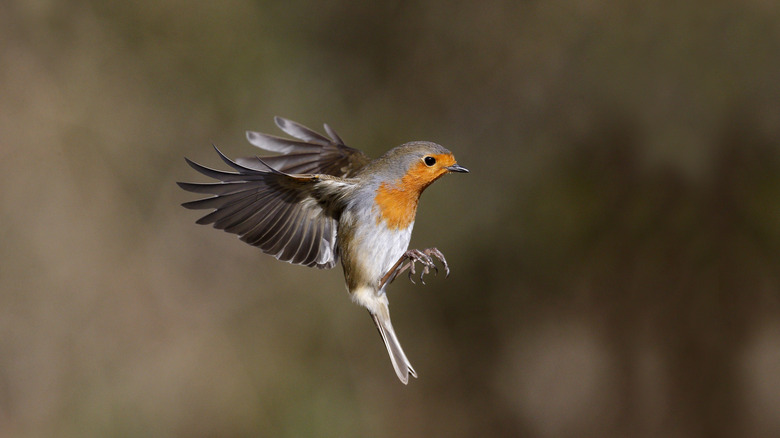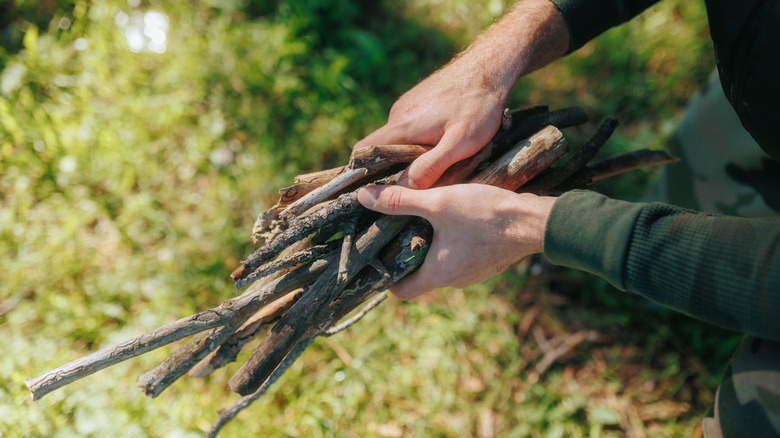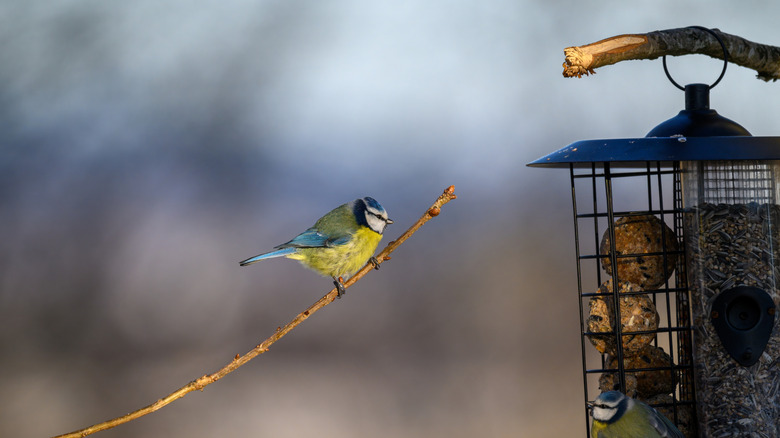How To Create The Perfect Perch To Encourage More Backyard Birds To Visit
If you look around your yard and wonder why you are not seeing any birds, it might be time to revamp your space to make attracting them easier. While a simple ingredient from your kitchen might make birds flock to your yard, you also have to assess the habitat. Birds and trees go together like peanut butter and jelly, as branches provide places to perch, and the leaves give birds cover. So, if you do not have natural places for birds to rest, adding a perch to your yard can invite more feathered friends.
Even if you have a bird feeder, a staging perch — or multiple perches — may be needed as birds approach the feeder cautiously, resting on nearby perches to look for predators or more aggressive birds. They also need a safe place to rest between feedings. So, if you don't have bushes or trees for them to use, a man-made perch may be in order.
While fallen or dead branches make the easiest — and cheapest — perches for wild birds, you can also get creative with materials you may have around the house, like an old spindle. The more challenging part of this DIY is figuring out where to put your perch and how to hang it securely. With the help of a bucket, some lumber, and rocks you can even create your own moveable "tree trunk" to keep the birds happy.
What to look for in a perch
We can't recommend fallen branches enough when it comes to giving wild birds a natural-feeling perch. If you don't have them in your yard, take a walk around the local park or on a hiking trail to find a wide variety of shapes and sizes, as different birds have different needs when it comes to a perch. Bigger birds need bigger branches. Tiny birds need tiny branches. Some types of wood can be toxic for some types of birds, so do some research on your local birds and look for the natives that they will thrive on. Alternatively, you can shop for bird-safe options.
Consider how you are going to attach or hang this perch. With a relatively straight branch, you can use materials like copper wire to tie around each end and create an easy to hang, swinging perch. This may be the easiest way to hang your perch, especially if you already have a plant hanger to hook it on or are looking for ways to attract birds to an apartment balcony. However, bigger branches with curves may need more support and a more permanent placement, so keep this in mind when perch-hunting.
Perfecting perch placement
If you already have a feeder in your yard, placing a perch nearby can make sense. It should be on the same level (or slightly higher) so birds can hang out while they wait for their turn at the feeder. If you have a deck or other outdoor structure, it can make a great place to attach your perch, but if not, you can make your own upright post to hold the twigs and branches you have collected.
Use a five gallon bucket filled with rocks or other material to provide weight. Cut a piece of lumber to the desired length and stand it upright in the bucket. Drill holes of various sizes into your lumber; these will hold the branches you have collected. You can use string or zip ties to secure the branches in place. This will create a portable "tree" that can be moved around, allowing you to find the optimal spot for your DIY perch. Remember that birds might need a little convincing to come by, so consider attracting more birds to your yard by planting flowers in their favorite spot.


